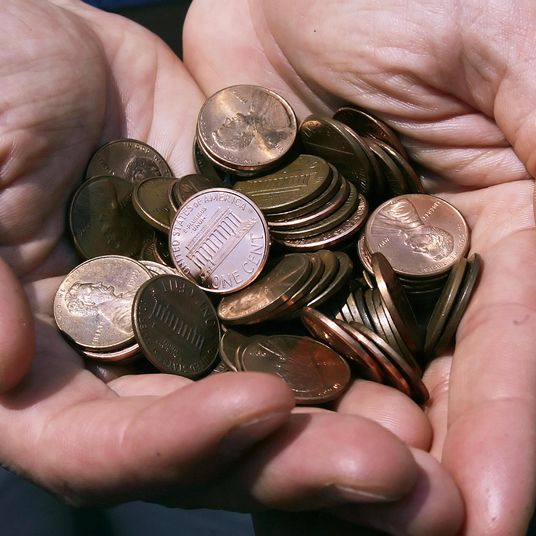
Donald Trump clinched his third consecutive Republican presidential nomination on March 12. His record in 2024 primaries and caucuses is 33 wins and two losses so far (Nikki Haley won the District of Columbia and Vermont primaries). In the latest round of primaries on March 19, Trump won 81 percent of the vote in Florida and Illinois; 79 percent in Ohio; 78 percent in Arizona; and 76 percent in Kansas. He had no real opposition since Haley quit the Republican race on March 6. And although pundits and Trump-haters (not to mention Trump-hating pundits) enjoy fantasizing about a Republican convention turning on the 45th president, it’s even less likely than the extremely implausible scenario of a Democratic convention dumping Joe Biden, since Republican delegates are legally bound to their candidate, barring a supermajority convention vote to release them.
But some claim Nikki Haley continuing to win a sizable minority of primary voters is a sign that Trump is weaker as a general-election candidate than the polls suggest:
Assessing this judgment requires a lot of context. We know from earlier primary results that in states where Democrats and Democratic-leaning independents can participate in Republican presidential primaries, a decent number of them will do so in order to smite the feared and hated Trump. Without exit polls, we don’t know exactly how many crossover votes there were in the open primaries of Ohio and Illinois (or in Kansas, where independents but not Democrats could vote for Haley). But there were undoubtedly some. These are not defecting Republican voters, and most of them were probably lost to Trump from the get-go. Their existence has little or no bearing on the general election.
But what about the closed primaries that bar Democrats and independents? Is the zombie Haley vote significant there? Some observers think so:
The actual number was 18.8 percent, but it’s true that in Arizona, another closed-primary state, the non-Trump vote climbed all the way up to 22.1 percent! Is that a sign of big trouble down the road for the GOP nominee?
It’s possible, but there’s some more context to keep in mind: Thanks to the heavy use of voting-by-mail in Arizona and Florida, a good portion of Haley voters in both states probably cast ballots before she dropped out on March 6 (mail ballots were sent out beginning on February 8 in Florida and February 21 in Arizona). Turnout was also very low in both states. However many “protest voters” there were, they won’t be a particularly large percentage of general election voters.
Finally, there seems to be an assumption that zombie voting is an unprecedented phenomenon. One assessment of the Florida primary vote suggested it was significant that Trump didn’t match his 2020 numbers in the state. He never had an opponent that year. Do voters typically just line up behind the nominee the moment opponents withdraw?
Historically, they don’t. In 1988, George H.W. Bush’s principal primary opponent, Bob Dole, dropped out of the race on March 29. Bush formally clinched the nomination on April 26. Without asking for these votes, Dole got over 10 percent of the vote in eight primaries after dropping out. For that matter, Poppy Bush got under 80 percent of the vote in seven primaries after Dole dropped out and he had no active opponent. Perhaps some of this residual opposition can be traced back to conservative doubts about the man who was once nicknamed “Rubbers” in Congress because of his vocal support for use of contraceptives. But it didn’t much matter in November 1988 as he crushed Michael Dukakis and became the 41st president.
Like father, like son. George W. Bush got a brief scare from John McCain in 2000 but still clinched the GOP nomination on March 14; McCain actually dropped out earlier, on March 9. Yet after he quit the race, leaving Bush officially unopposed, the Arizonan won 20 percent of the primary vote in Florida, 22 percent in Illinois and Pennsylvania, and over 10 percent in Oklahoma, Tennessee, Wisconsin, Indiana, North Carolina, Nebraska, West Virginia, New Jersey, New Mexico, and South Dakota. While he required an assist from the U.S. Supreme Court to become the 43rd president, Bush’s failure to win Republican primary voters unanimously wasn’t a factor at all.
If the zombie-candidate vote against Trump grows or he actually loses somewhere, it might be time to suggest Republican defections could be a big problem for him in November. But for the moment, there’s nothing that shocking or unusual about the votes Nikki Haley is winning, and Trump’s prospects in November are probably better assessed by looking at polls matching him against his Democratic opponent and/or others in the general-election field.
More on politics
- Is Trump’s Paper-Straw Ban Really About His Shark Phobia?
- Pope Informs J.D. Vance He’s Wrong About Migrants, Christianity
- Federal Prosecutors Told to Drop Charges Against Eric Adams: Live Updates






























